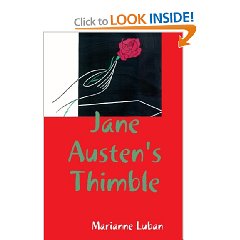The religion of Akhenaten was new. It rejected the old gods of the land but centered around the Aten, the disc of the sun. All other manifestations of the sun were included in the theology, of course, and that is why Heliopolis, the city of the sun in the north, became the second center of the worship of the solar deity next to Akhetaten, the pharaoh Akhenaten's capital. In order to preserve his own divine status in the scheme of things, Akhenaten represented himself as a true "son of the sun" in the guise of Shu, a light-deity who sprang from Ra and formed a kind of "holy trinity" with the sun, including the twin of Shu, Tefnut, goddess of moisture. Nefertiti, the wife of Akhenaten, was the living incarnation of Tefnut and, truly, she was the only goddess of the new belief system, being one with Ra. The unification of Shu and Tefnut with the sun-god preserved the monotheism of Akhenaten.
In the tomb of Ay near the royal city, Nefertiti is called "goddess". Ay's wife, Tey, had nursed this divine child, implying that Nefertiti had been a goddess since birth. Remnants of the sarcophagus of Akhenaten from the royal tomb indicate that it was none other than Nefertiti who assumed the role of the protective goddess of its four corners. No other goddess existed, but the iconography evidently remained appealing. But the idea of Akhenaten and Nefertiti being children of the sun did not come from nothing. It had begun in the previous generation, when Amenhotep III began to style himself “ the shining disk of the sun of Egypt”. In other words, a sun-king.
Here is a page that gives information about Nefertiti being attested in Year 16 of Akhenaten:
http://www.dayralbarsha.com/node/124
Friday, November 30, 2012
Tuesday, November 20, 2012
My Work With the Royal Mummies
This is the old [but "resurrected"] website on which I made my points for the identification of Amenhotep III with the mummy. Some doubted the mummy was really that of this pharaoh, but DNA has vindicated the identity--and my work:
http://www.oocities.org/timessquare/alley/4482/am3.html
http://www.oocities.org/timessquare/alley/4482/am3.html
Here is a wonderful page about the Amarna masks: http://www.flickriver.com/groups/1622542@N21/pool/interesting/
If you click on the individual thumbnails, you will get to the full views. Then look at the comments under them and you will see which ones I have tried to identify.
Tuesday, November 6, 2012
Did the Pharaohs Practice Fratricide?
I would really like to see the
autosomal DNA of King Thutmose IV so that a question could perhaps be
answered once and for all: Did the pharaohs of Egypt kill their
brothers like the sultans of Turkey did for a time once they had
produced their first male heir? This was done in order to avoid
possible civil war and intrigues. It was a cruel practice but there
are indications it may have been followed in ancient Egypt. No man
is ever styled “king's brother”, although “king's sister” is
attested. King Ramesses II constructed a huge tomb, KV5, evidently
meant for his children. Did he do this because so many had already
predeceased him [and he had very many children]—or in anticipation
of a dreaded day? Egyptian texts are silent on the subject. On the
other hand, a son of the one-time heir of Ramesses the Great,
Khaemwaset, did live to have an illustrious career. But he was the
nephew and not the brother of Merneptah, the king's son who managed
to succeed his father. Perhaps a nephew's claim to the throne was
thought negligible by the the polygamous pharaohs, who anticipated
having numerous offspring of their own.
Since the autosomal results for Tutankhamun and some of his family members were released, it has been noticed that Yuya, an ancestor of the young king, shared significant alleles with Tutankhamun's grandfather, Amenhotep III. However, without seeing the DNA of the father of the latter, we cannot know if Yuya was related to Amenhotep III on his father's side or his mother's. If Yuya shared alleles with Thutmose IV, he may have been his brother [or even his paternal uncle, depending upon the age of Yuya] which would mean it was possible for the brothers of kings to survive and even become important men. If they were not styled “king's brother”, it may have been for some other reason having merely to do with protocol.
This is something that requires more
investigation, but first we need to isolate the y-DNA of the pharaohs
of the dynasties and create a database with which the y-DNA of other
male mummies could be compared. If this DNA could be discovered in
the general population, then that would prove that royal fratricide
was not a common practice in the Egypt of the pharaohs. On a positive
note, KV5 apparently never saw the burials for which it was
constructed. But, if any other Egyptian monarch may be suspected of
having numerous children—and sons—it would be Amenhotep III.
And, yet, according to a royal lady of the post-Amarna period in a
letter to the King of the Hittites, there was no one left for her to
marry but a servant. If the writer was Ankhesenamun and she was
telling the truth, then perhaps even her elder sister, Meritaten, had to
marry a “servant” there at Akhetaten, who became the short-lived
King Smenkhkare by virtue of this union, and Ankhesenamun did not
want to do the same. On the other hand, it is rumored that DNA close
to that of Tutankhamun has been discovered in a modern Druse
population. If true, that would not have come via Tutankhamun, who
evidently was the end of his line, but some predecessor.
Subscribe to:
Comments (Atom)









